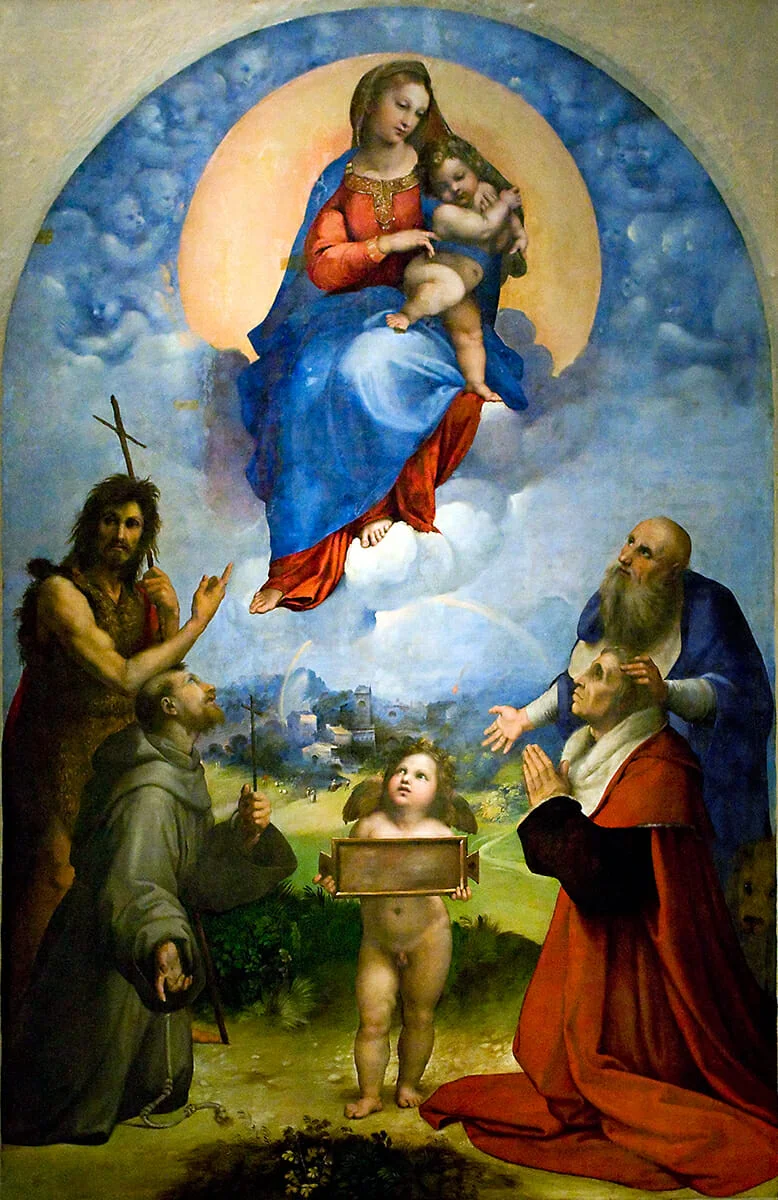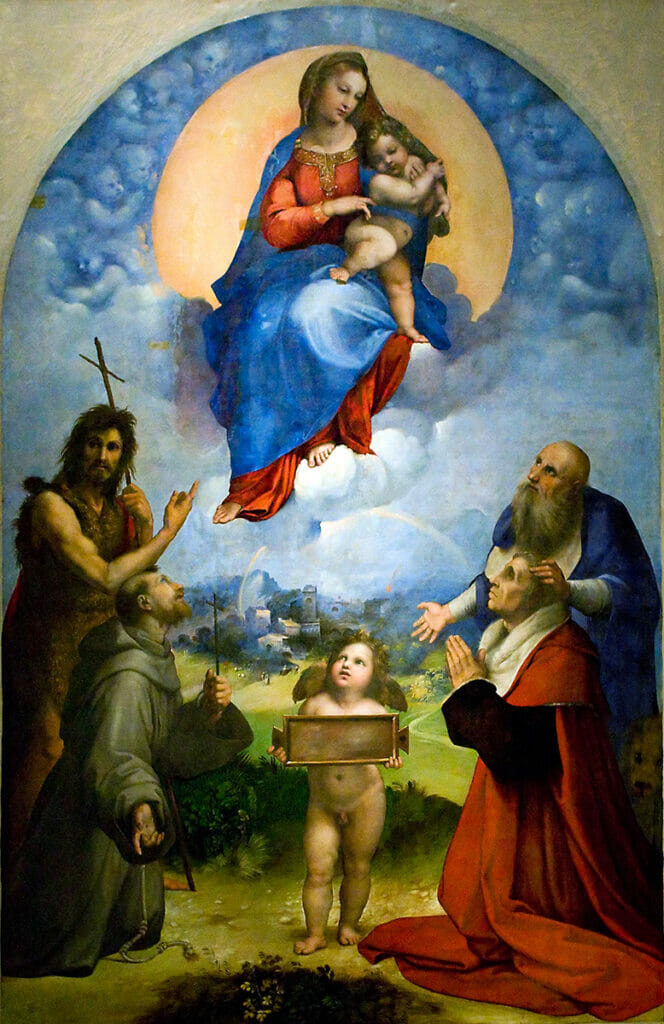
Madonna di Foligno gathers all Raffaello Sanzio's fundamentals
Artist
Year
Country
Format
Original Exhibition
Material/Technique
Raffaello Sanzio‘s painting Madonna di Foligno is a colorful example of an ex-voto. This is a form of religious offering to a divinity (a practice dating back to ancient Greece) after a request has been granted. In this case, the commissioner of the work is Sigismondo de’ Conti. Secretary of Pope Julius II, he had offered the panel itself as an ex-voto to the Madonna for her protection.
The structure of a pyramid
This time, the miracle is visible in the center background of the work. One can see a fireball fly over the houses without damaging them. Those houses were the property of the client.
The artwork has the form of a pyramid. At the top, the Madonna and child appear in a halo of light. They seat on a throne of clouds that transform into faces of small blue cherubs. In the bottom half, the client kneels in prayer. Three saints intercede at the Madonna’s request. They play a role similar to that of the “secretaries” that act as the miraculous bridge between the faithful and the highest divinities.
As he does in his polyptychs, the painter never chooses Saints by coincidence. Usually, they are related to the private cult of the commissioner and the destination of the work. Furthermore, when the author represents the commissioner himself, a Saint carrying his same name usually introduces him. Sometimes, it is a Saint to whom the portrayed man turns his devotion. This is the case in this work.
The Saints in the painting
Saint Jerome introduces Sigismondo de’ Conti into the presence of the Madonna. One can recognize the Saint by his physiognomy (old, bald, with a long beard), for the cardinal’s habit, and the lion’s presence. Then on the left is Saint John the Baptist, dressed in camel’s hide, with the processional cross in hand. Saint Francis of Assisi wears his Franciscan habit, bears his cross, and the stigmata visible on the hand open to the viewer.
The presence of Saint Francis links to the original destination of the piece, the Basilica di Santa Maria in Aracoeli in Rome, run by the same order of friars. Raffaello Sanzio completed the piece while he was working in the Raphael Rooms in the Vatican.
Raffaello’s style characteristics
At that moment, Raffaello was enjoying the most prodigious moment of his career, considering his premature death in 1520.
The fundamental characteristics of his style can be traced back to, above all, the childlike faces of the Baby Jesus and of the angel that holds the board up in the center of the panel: the sweetness and accurate linearity of the features, together with the vivid, but never over-saturated, colors.

Tag


